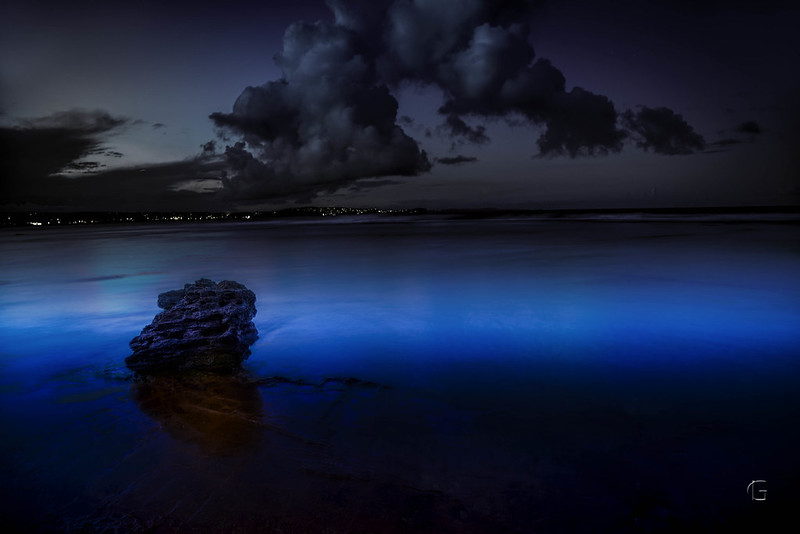 Imagine yourself at a beach at night staring up at the stars and the Milky Way lighting up the sky... and just then the water turns a stunning, electric blue!
Imagine yourself at a beach at night staring up at the stars and the Milky Way lighting up the sky... and just then the water turns a stunning, electric blue!
What you are witnessing is a natural phenomenon known as bioluminescence. Bioluminescence is a process by which marine creatures give out light from their body.
Chasing and capturing this phenomenon has in fact become a tourist activity in places like New Zealand. Many call this sight the "aurora of the seas," inspired by the aurora australis or the southern lights in the sky.
What Causes Bioluminescence?
Bioluminescence is exhibited by many organisms, such as specific species of fish, squid, jellyfish, as well as fireflies. The glow is attributed to a chemical reaction involving a molecule called luciferin that reacts with oxygen to produce light from within an animal's body.
 Animals can control when they light up depending on the situation. They can choose the amount and color of the light depending on whether they are running away from predators, attracting a possible mate, or hunting. The colors are typically a vibrant blue or green -- this is because colors that have shorter wavelengths such as blue and green travel easily through the water.
Animals can control when they light up depending on the situation. They can choose the amount and color of the light depending on whether they are running away from predators, attracting a possible mate, or hunting. The colors are typically a vibrant blue or green -- this is because colors that have shorter wavelengths such as blue and green travel easily through the water.
In the waters off the coast of News Zealand, microscopic phytoplanktons glow neon-blue when they sense the presence of smaller fish that eat them. Their light causes the waves to glow, the water to sparkle, and the fish to leave shimmering trails as they swim through the ocean.
How to See the Glow
Bio chasers, enthusiasts who chase such displays, often scout the beach for bioluminescent waves all day.
As an onlooker, it is important to research before visiting as bioluminescence is not guaranteed. The plankton has a built-in sense of time that allows them to only glow at night. Also, warm and rainy days increase the chance of bioluminescence taking place, as the run-off from rain provides nutrients that help stimulate the algae.
On the other hand, too much wind can cause the organisms to sink and disperse. During the day, red tides and little pockets of algae are indicators that there might be a bioluminescent show at night.
Bioluminescent waves are truly one of the most unique and stunning sights to see. They remind us of the many exotic creatures that inhabit our planet and our responsibility to protect them for future generations.
Sources: Guardian, National Geographic, Smithsonian









